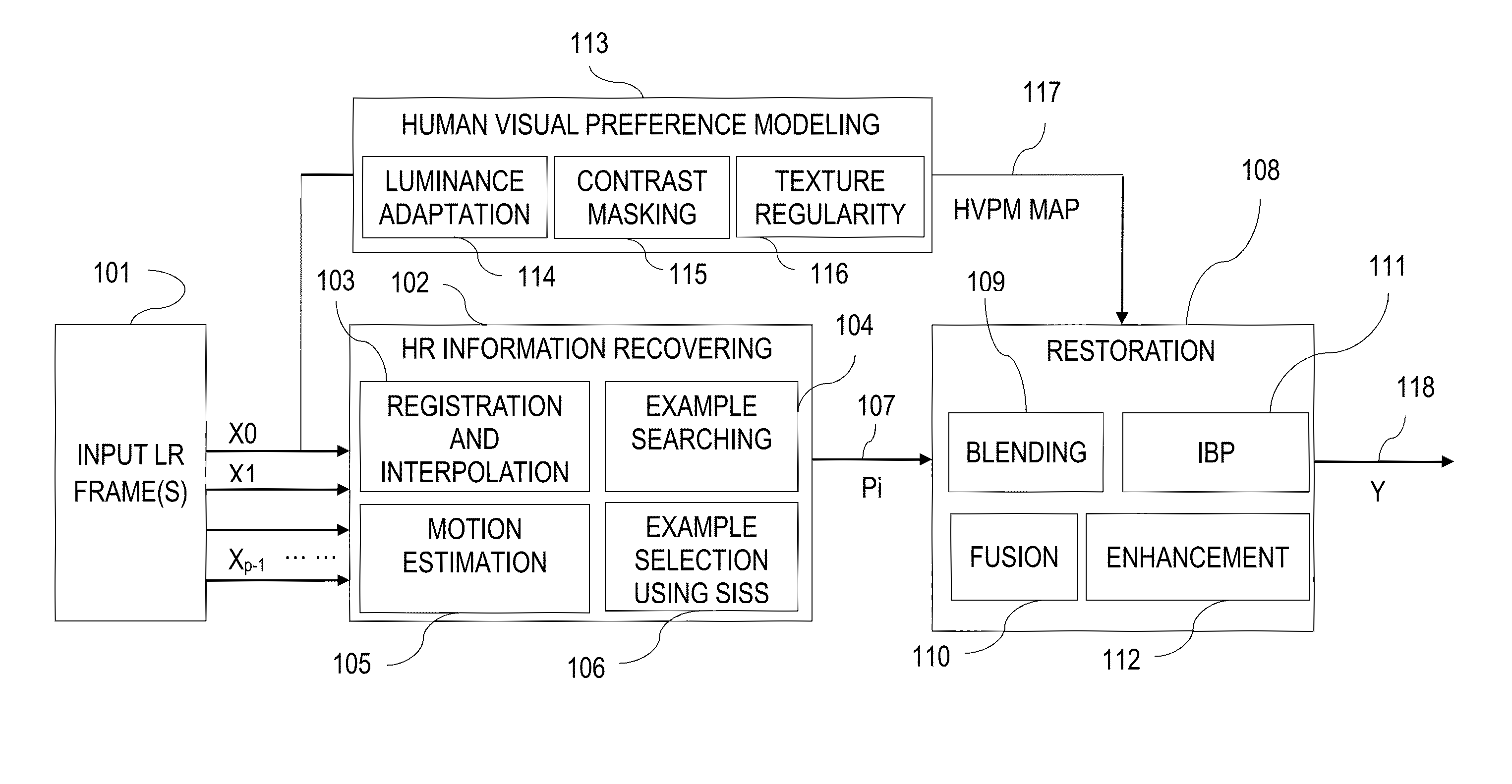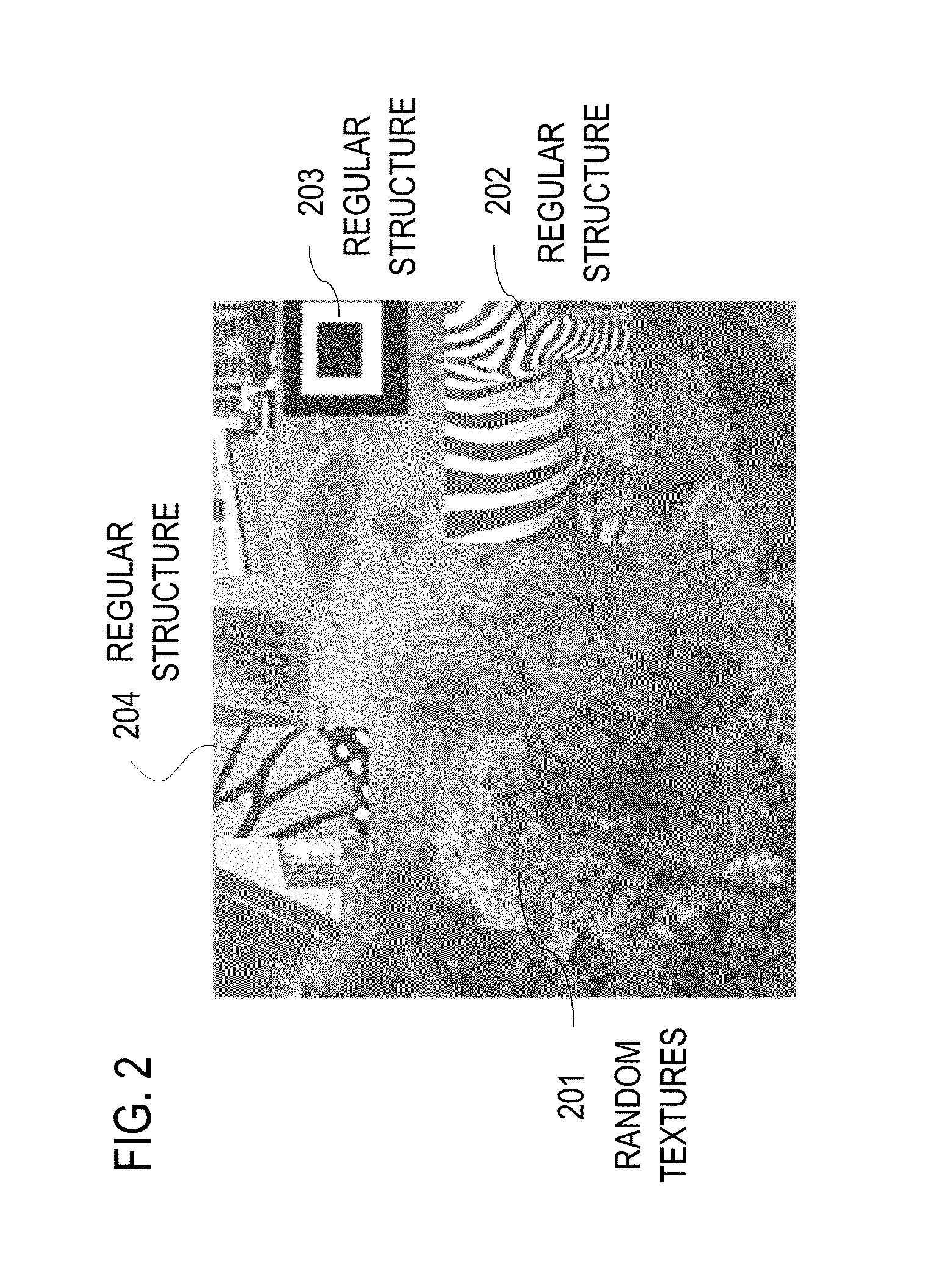Visual-Experience-Optimized Super-Resolution Frame Generator
a super-resolution, frame-generator technology, applied in image enhancement, image analysis, instruments, etc., can solve the problems of not being able to detect the same size artifact in a random region, the user may be annoyed by the same size artifact, and the memory consumption and computational complexity are rather high
- Summary
- Abstract
- Description
- Claims
- Application Information
AI Technical Summary
Benefits of technology
Problems solved by technology
Method used
Image
Examples
Embodiment Construction
[0031]The present invention relates to an improvement in image processing. The following description is presented to enable one of ordinary skill in the art to make and use the invention as provided in the context of a particular application and its requirements. Various modifications to the preferred embodiment will be apparent to those with skill in the art, and the general principles defined herein may be applied to other embodiments. Therefore, the present invention is not intended to be limited to the particular embodiments shown and described, but is to be accorded the widest scope consistent with the principles and novel features herein disclosed.
[0032]The inventors have realized that errors are sometimes introduced when generating a SR image from a lower-resolution image. These errors usually appear as artifacts mixed with real image details. These errors sometimes are visible, even annoying, to a human viewing the SR image. SR methods usually optimize the SR image according...
PUM
 Login to View More
Login to View More Abstract
Description
Claims
Application Information
 Login to View More
Login to View More - R&D
- Intellectual Property
- Life Sciences
- Materials
- Tech Scout
- Unparalleled Data Quality
- Higher Quality Content
- 60% Fewer Hallucinations
Browse by: Latest US Patents, China's latest patents, Technical Efficacy Thesaurus, Application Domain, Technology Topic, Popular Technical Reports.
© 2025 PatSnap. All rights reserved.Legal|Privacy policy|Modern Slavery Act Transparency Statement|Sitemap|About US| Contact US: help@patsnap.com



